In the health conscious world of the new millennium, healthful fine dining and garden fresh vegetables have taken an honorable position of prominence. Salad bars are in vogue. A colorful salad helps dress up the bland dinner plate. Fresh vegetables are healthy and wholesome. Unfortunately, it also causes havoc with the G-d fearing housewife, or the caterer’s mashgiach, who want to make sure that the vegetables served are not only clean and fresh, but insect-free, as well. Oftentimes, this task is tedious, time consuming, and frustrating. This is particularly true when dealing with large quantities of exotic, leafy vegetables that have to be inspected in a relatively short amount of time. What is the answer?
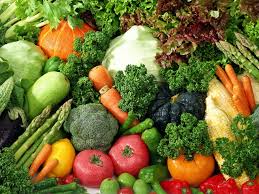
All Washed Up

The Tell Tail Sign
Our Rabbis in their sage understanding of human nature tell us, “Al tistakel b’kankan elah b’mah sheyaish bo.” Do not look at the outer receptacle, look at its inner contents. This adage has often been loosely translated into the famous American adage, “Don’t judge a book by its cover.” In the case of kosher fish supervision, in order to determine whether the fish is, indeed, kosher it has to be judged by its cover.
The Torah states clearly how one is to determine whether or not a fish is kosher. If the fish has ‘snapir v’kaskeses’, fins and scales, the fish is kosher. Fish that have only fins, such as catfish, or totally smooth skin, such as eel, or crustaceans, such as lobster, are non-kosher.
Fish production is an active global enterprise. Nile perch from Nairobi, tuna from Fiji, farm-raised salmon from Chile and flounder from China arrive daily to fish companies […]
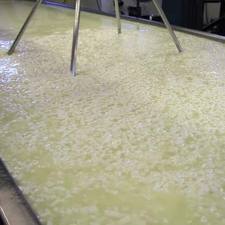
Wheying the Kosher Possibilities
Food technology has made enormous strides since Miss Muffet sat down to her feast of curds and whey. Today whey has emerged as one of the most versatile food components with many new and exciting food applications. Typically, whey cream can be churned into butter or be converted into ricotta cheese. Whey can be dried into a powder and be used as a basic ingredient in cereals, baked beans, hot cocoa, and seasonings. Whey protein concentrate is a fundamental ingredient in infant formula and bakery products. Lactose, the milk sugar found in whey, is used as a flavor enhancer or a carrier in pharmaceuticals. In addition, whey is converted into alcohol and used in alcoholic beverages. Clearly the industry continues to discover whey’s versatility. Where does whey come from and what, if any, are the kashrus issues relating to whey in general, and cholov yisroel in […]

The Sweetest Fruit of Them All
Unbelievable but true.
Overheard conversation between Mother and a precocious seven year old at a typical supper table…
“Now dear you must eat your fruits and vegetables!”
“I just finished a delicious double portion.”
“Great what did you eat?”
“A yummy chocolate bar.”

The Spice of Life: A Kashrus Overview of Salt & Pepper
The use of spices in preparing food has played a role in history disproportionate to their nutritional value. A ransom paid by Alaric the Goth that included three thousand pounds of pepper delayed the attack of Rome for two years. The discovery of the New World was due, in great measure to the search for such spices; that was the main objective of the early trans-Atlantic explorers. Our Rabbis tell us1 that the Torah is compared to salt and the Mishna to pepper. Indeed, the kashrus issues related to salt and pepper give us sufficient reason to analyze these primary food ingredients.
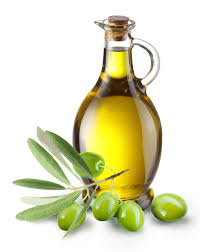
Olive Oil: The Contemporary Industry of Antiquity
Olive oil, the liquid gold of the ancients was touted for its nutritional, medicinal, and cosmetic value. As a fuel it illuminated the home. As a food ingredient it was a feast to the palate. Olive oil production is one of the world’s oldest industries. Interestingly, much of this ancient industry has not changed over the millennia.
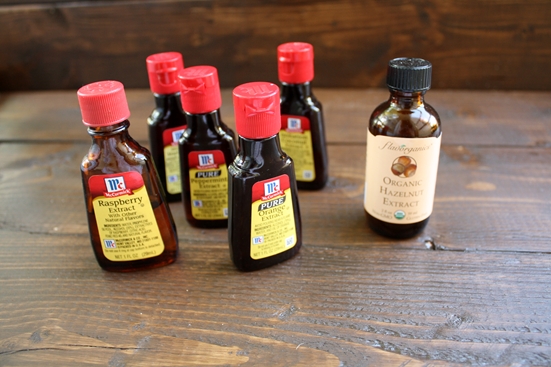
Kashrus in Good Taste: Kosher Certifying the Flavor Industry
You may not realize it, but flavor ingredients are found in some shape or form in practically every aisle of your favorite supermarket. The ketchup in Aisle 1 uses a Tomato Flavor to enhance its taste; the cake mixes in Aisle 5 use Artificial Vanilla Flavor to give it taste; for that matter Vanilla Flavor is even added to the pack of cigarettes that are purchased at the check-out counter. Indeed, products from soup to soap use an array of flavors and fragrances to enhance their products.

Kashrus Goes Crunch
Everyone wants to emulate a winner. The world of food manufacturing and marketing is no exception. Whenever a new product reaches the marketplace, or a new business venture is successfully launched, rest assured that product or venture will be duplicated, cloned, or modified immediately. One only needs to travel north of Baltimore to Pennsylvania Dutch country to see this in reality. Southern Pennsylvania is home to tens of snack food manufacturers, and is aptly dubbed “the snack food capital of the United States.”
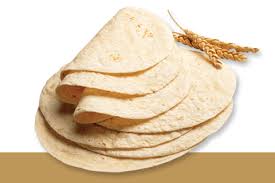
It’s Takke a Taco
Those tried and true N.Y. subway travelers of the ‘60’s and ‘70’s remember the memorable poster of the smiling Indian holding a delicious corned beef sandwich with the caption, “You don’t have to be Jewish to Love Levy’s Real Jewish Rye.” Today, with the virtual explosion of ethnic foods, you don’t have to be Japanese to enjoy Sushi, you don’t have to be Italian to enjoy ravioli or minestrone, and you don’t have to be Mexican to enjoy tacos and burritos. However, the common link between all these ethnic foods is that today the kosher consumer can sink his teeth into a delicious enchilada or schwarma that bears reliable kosher certification.

Industrial Eggs: Not As Simple As it May Seem
The talmudic paradigm for a concept that is blatantly obvious is Keveiasa Bechuscha, the issue is as clear as the permissibility of mixing eggs into dairy products. However, things are not always as simple as they may seem, and just as the Ba’alei HoTosfos in Maseches Eiruvin discuss how less than “obvious” this concept may be, the production and use of eggs in modern food production pose questions whose answers are far from being considered obvious. The purpose of this article is to discuss some of the issues that confront modern kashrus supervision as they relate to egg production.

Enzymes
Published Spring 2013
Centuries ago, the ancient Greeks recognized that there were certain properties in leaven which caused chemical changes in flour and water converting it into bread. They called the magical ingredient “enzyme” which is the Greek term for “in leaven.” Today enzyme remains the term by which we refer to these biological catalysts. We now understand that enzymes are proteins found in every living organism be it animal, vegetable, or microbial.

Dried Fruit: Nature’s Way of Wrinkling Gracefully
It has been called nature’s candy. It’s a sweet source of nutrition whose popularity is on the rise. Commensurate with its growing popularity is its demand. In today’s global economy the dried fruit trade literally spans the entire globe. Apples from China, prunes from Bulgaria, figs from the Middle East, dates from Tunisia, or raisins from South America, and of course apples, peaches, plums, raisins, figs, and dates in the good old USA. Naturally, this growth presents a whole new set of challenges to kashrus agencies. How do you send a mashgiach to supervise date productions in Pakistan, raisin productions in Iran, or plum productions in Bulgaria?

Candy is Dandy
Kashrus Kurrents, Winter 1997
Walking through a candy store leaves one with little doubt that great creative genius has been a long time associate of the candy industry. It is an absolutely amazing act of wizardry to see the multitude of confectionery varieties, shapes, textures, and tastes that can emerge from sugar, chocolate, and corn syrup. Chewy caramels, cotton candy, lollipops, chocolate pralines, nut logs with creamy nougat fillings, the list is endless.
So what could be wrong with candy? Especially if the ingredient panel states only simple, natural ingredients? Not so simple.
At times a product may have nothing that presents a Kashrus problem, but at other times the seemingly identical product can be very problematic.
Let’s take a behind the scenes tour of Kosher candy manufacturing, where we can examine the production processes and procedures of some of the popular delicious confections enabling us to pinpoint the Kashrus […]
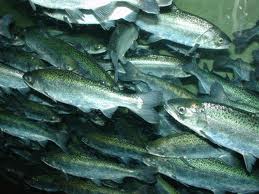
A “TAIL” OF TWO CITIES: Worldwide Fish Production
By: Joel Weinberger, Star-K Field Supervisor
The following article describes the saga of two diverse Star-K fish productions in two very different parts of the world – Kodiak, Alaska, and Sarong Irianjaya, Indonesia. Salmon is produced in Alaska, and tuna is produced in the Far East. Traveling to both locations is equally arduous and each location presents its own set of challenges to the traveling Mashgiach.

A 30 Year Retrospective on Kashrus Kurrents
Published Summer 2008
Approximately thirty years ago shortly before “Pesach” 5738 Mr. A. J. Levin, a vice president of the Orthodox Jewish Council, began publishing Kashrus Kurrents. In that first issue, printed on the familiar yellow paper with the blue Kashrus Kurrents logo, it was deemed necessary to advise the Baltimore community that they cannot rely on labels or advertisements that merely states ‘Kosher for Passover’. From that same issue we learned that the fledgling Star-K organization had just inaugurated its kosher hot-line whereby one could get accurate kashrus information Monday through Thursday between the hours of 10 a.m. to 12 p.m.

The Importance of Accurate Kashrus Information
As Bnai Torah we tend to consider ourselves sophisticated and knowledgeable regarding matters that we deem important. We are not easily swayed by glitzy advertising, nor are we apt to blindly follow recommendations from others unless we are convinced that the proffered advice is sound and based on actual knowledge. When making a major purchase such as an automobile, or deciding which yeshiva or seminary is the right choice for our son or daughter, we make a decision after deliberate and careful investigation of the facts. Of course, we do accept the opinion of others, but only after we are convinced that the one dispensing advice has factual knowledge of the issue at hand.

Money-Saving Tips and Strategies for Passover and Year-Round
When we prepare to celebrate our freedom from Egyptian slavery on Pesach, the last thing we want to do is enslave ourselves to debt in paying for that eight-day celebration! Although the Gemorah states that when Hashem assigns a person’s livelihood on Rosh Hashanah for the coming year, He does not deduct Shabbos and Yom Tov expenses from the sum allocated, it is no mitzvah to spend money for those expenses, needlessly. With a little forethought and planning, you can implement some helpful money saving tips, year-round, in anticipation of Pesach.
Optimally, it would be wise to budget for Pesach, well in advance. Decide how much you will have to spend, and what you might need to cut from your budget to achieve that figure, by asking yourself: How much do I typically spend on groceries, monthly? How much did I spend on Pesach, last year? What are the specifics of […]

Kosher Chickens: From Coop to Soup
Published Spring 2007
There is a strange but true phenomenon that has resulted in our society’s technologically
motivated, highly competitive marketplace. If a manufacturer or producer desires to remain viable and competitive, he never loses sight of the fact that successful business demands innovation, creativity and growth. Status quo in the manufacturer’s lexicon often means stagnation, and no company wants to stagnate. In turn, the manufacturer on the move continues to innovate in an environment that encourages survival of the fittest. This presents additional challenges for products requiring kosher supervision from a kashrus agency. These axioms are very keenly felt in the production of kosher poultry, where halachic ingenuity and technological advances converge. The average kosher consumer rarely, if ever, has the opportunity to see a large or small slaughterhouse in action. Therefore, Kashrus Kurrents offers its readers an inside look at the policies and procedures of […]

Star-K Side Bar Summer 2007
Other News From The STAR-K
STAR-K Kashrus Training Program!

Hotel Kashrus on the Front Lines
Rabbi Mayer Kurcfeld, Star-K Kashrus Administrator
Published Summer 2007
Introduction
The world of hotel kashrus is exciting, stressful and always a challenge. Effective hotel
kashrus demands a keen understanding of modern equipment and complex facility
dynamics, along with an excellent mastery of the hotel food and beverage industry. These
criteria are essential in facilitating the role of the administrator and mashgiach as respected members and powerful presence in the hotel kitchen. The role of the mashgiach, once typecast as that of an old man with a white beard sitting on a chair, has changed. Not only does the mashgiach need to know that dairy and meat must be kept separate, the “new-age” mashgiach must relate to the kitchen and serving staff with diplomacy and grace.

Planning Your Simcha; The Agony or Ecstasy
Published Summer 2007
The joy, the planning, the anticipation, the expense — there is a lot that goes into a Yiddishe simcha. Be it a chasuna, Bar Mitzvah, or bris, every significant life cycle event is extra special and the baalei simcha want to ensure that their guests have a good time. Central to that goal is a delicious seudas mitzvah. Endless hours of planning are spent making sure everything is perfect, from the decor to the menu. Is the same effort expended regarding the kashrus level of the event? If the simcha is being catered, does the caterer have reliable kosher certification? As catering costs have risen, consumers have opted to cater their own simchas. This article will attempt to address some key issues that one should consider when catering an event.

Kashrus seminar-2007
With the expulsion of Jews from Spain in 1492, Poland became the recognized haven for exiles from Western Europe and the cultural/spiritual center of the Jewish people. Prior to the outbreak of World War II, it housed the second largest Jewish community in the world, with nearly 3.5 million Jews. All that changed rapidly following Nazi Germany’s invasion in 1939. A scant 11 percent (369,000) of the Polish Jewish population escaped the death camps. Many fled their native Poland in reaction to anti-Semitic violence or repression under Communism. Those who stayed often turned their backs on Yiddishkeit. Now, Polish Jews are feeling a new sense of tolerance and security in their post-Cold War democracy. An increasing number are returning to their Jewish roots, which in many cases have been discovered only recently.
Rabbi Mati Kos is the first known religious person in his family in the past […]

Shmitta 5768
Published Fall 2007
Dates of Kedushas Shviis, sfichim, and biur can be found in our 2008 Pesach Directory, click here.
For over nineteen hundred years, the Jewish people have longed to return to Eretz Yisroel, the land of Israel. It is only there that we can realize our full potential as a nation, and the Torah’s blueprint for life can be completely fulfilled. Throughout the millennia, the most important dimension of this yearning was to once again be able to fulfill the mitzvos hatluyos ba’aretz (agricultural laws), the commandments that can be observed only in the land of Israel. With Hashem’s help, many of us in this past generation have realized part of this two thousand year-old dream. Yet, this realization has presented us with new challenges.

The Safety of Our Kosher Food
Published Winter 2007
How many Kashrus Kurrents readers have heard this true Jewish fish tale? In the early 1900’s, when it was customary for Jewish housewives to make homemade gefilte fish, a very important food safety issue came to light. Diphyllobothrium latum, a fish tapeworm, was identified in the intestines of Jewish homemakers. It was measured at 30 feet and had a life span of up to 20 years. This largest parasite of humans attacked the digestive system of the cooks, who would periodically taste the raw concoction of ground freshwater fish to ensure the correct mix of salt and pepper. Although not fatal, gastrointestinal symptoms accompanied by increased weakness, shortness of breath, lethargy and fatigue were present for months, until the cause was finally discovered. In our day, the pernicious anemia that results may more likely be obtained from eating sushi or raw contaminated beef.

Star-K Side Bar Spring 2008
Other News From The STAR-K
STAR-K CERTIFICATION

It’s Kosher on Paper Only
Published Spring 2008
If you have ever left cookies in the oven a little too long, and they became stuck to the pan, you know what a frustrating experience it can be. Imagine multiplying that feeling hundreds or thousands of times, and you will begin to understand one of the major problems that commercial bakeries and food producers face all the time. To avoid this problem, food manufacturers use release agents to grease the pans. These agents are frequently found in a spray form, like PAM, and must always be kosher certified. Paper pan liners may also be used as release agents, particularly in bakeries. They provide more consistent browning and baking with no added fat or calories, and require less clean-up. Pan liners are also used by candy makers, and may be used as cupcake holders or wraps for frozen gefilte fish. Consumers are also discovering […]

McBiodiesel: New Not So Kosher Vistas for Spent French Fry Oil
Published Spring 2008
In an energy driven world with limited fuel resources, and a public that is totally enamored with its automobiles, industry is constantly looking for inexpensive new sources of alternative fuel. Biodiesel fuel is one answer. Biodiesel is a chemical process that separates vegetable oil or animal fats into two parts: methyl esters – which is another name for biodiesel, and glycerin. The biodiesel is then blended with alcohol to make biodiesel blends that can be used as a substitute for diesel fuel or other fuel substitutes.

Meat and Dairy-A Kosher Consumer’s Handbook
Published Spring 2008
One of the best known halachos of kashrus is that one may not eat meat and milk together. One of the reasons that kosher symbols incorporate a ‘D’ onto the kosher certification is to notify the consumer that the product may not be eaten together with meat, or within six hours after eating meat. Similarly, products containing meat as an ingredient will state “meat” next to the Star-K or other kosher symbol.

Star-K Side Bar Summer 2008
Other News From The STAR-K
STAR-K CERTIFICATION
Announces Monthly TeleKosher Conference Program for Local Kashrus Agencies
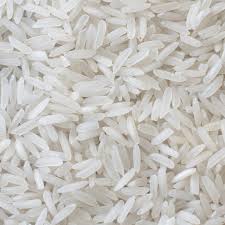
Rice: Natures Answer to Hashems Blessings
Published Summer 2008
It has been touted as nature’s most versatile food. There is no grain that feeds more people worldwide, and can boast that it is free of gluten and allergens. When the Gemara in Brachos discusses the blessings that are made before and after eating this grain, the mnemonic used to remember the Gemara’s conclusion is Amen,אמן : “נפשות ” , “מזונות ”, “אורז ” – “Orez”, “Mezonos”, “Nefashos”. If you haven’t guessed by now, the grain we are discussing is Oryza Sativa, otherwise known in Talmudic terms as 1 “Orez“, “אורז ”. We know it simply as rice.

 STAR-D
STAR-D STAR-S
STAR-S